At a time when feminism continues to increase in complexity, nuance, and often contention, Sexish, a group exhibition at Birch Contemporary, explores women’s sexuality in a way that is as personal and subtle as women’s individual experience. The exhibition, an in-house curatorial collaboration between gallery owner Robert Birch and assistant director Rebecca Travis, brings together works by Maryanne Casasanta, Orly Cogan, Cathy Daley, Ilona Szalay, Julie Moon, Dara Vandor, and Janet Werner. In doing so, it carries on an artistic project evolving since at least the 1960s, in which artists like Carolee Schneemann, Yoko Ono, Lynda Benglis and many others have worked to subvert a domineering male gaze and bring female sexuality into the realm of female representation. Aiming to complicate our understanding of female eroticism, the show counters a visual culture dominated by a male perspective and successfully opens a space in which women are free to look at and for themselves.
 Installation view showing Julie Moon, Ballerina, 2010, porcelain, glaze, ballet slipper, 39″ x 16″ x 13,” (in front), Janet Werner, Jo, 2014, oil on canvas, 31″ x 24″ (left), and Orly Cogan, Women’s Work, stretched, hand-stitched embroidery and paint on vintage table linen, 38″ x 33″ (right)
Installation view showing Julie Moon, Ballerina, 2010, porcelain, glaze, ballet slipper, 39″ x 16″ x 13,” (in front), Janet Werner, Jo, 2014, oil on canvas, 31″ x 24″ (left), and Orly Cogan, Women’s Work, stretched, hand-stitched embroidery and paint on vintage table linen, 38″ x 33″ (right)
As Birch described in a recent interview, the idea for the show began two years ago when he saw and was intrigued by a work by Maryanne Casasanta at auction, drawn to the subtlety of its approach to female sex- and sensuality. After attending art fairs like Scope LA in the mid-2000s, where he met artist Orly Cogan (also included in Sexish), Birch began viewing work like Casasanta’s as a counterpoint to the increasingly graphic, hypersexualized representations of women he was seeing. In many cases, he observes, the work at these fairs was essentially Hustler-style pornography dressed up as watercolour, almost always created by male artists. With Casasanta’s work in mind, Birch began looking for similarly nuanced representations of women’s sexuality that might counter this type of work. The aim was to create a show that would contain a personal voice on the subject of sex from women working in a range of media. With Sexish, he and Travis have achieved just that. The show brings together painting, drawing, photography, ceramics, and needlepoint and represents a spectrum of women’s erotic experience. Pretty, coy, sexy, raw, aggressive, menacing, whimsical, funny — Sexish is all of these. Yet, it maintains impressive cohesion and reminds us that sexuality is never as straightforward as stereotypes suggest. Like the equivocal-ish of the show’s title, sex exists in the realm of ambiguities and greys.
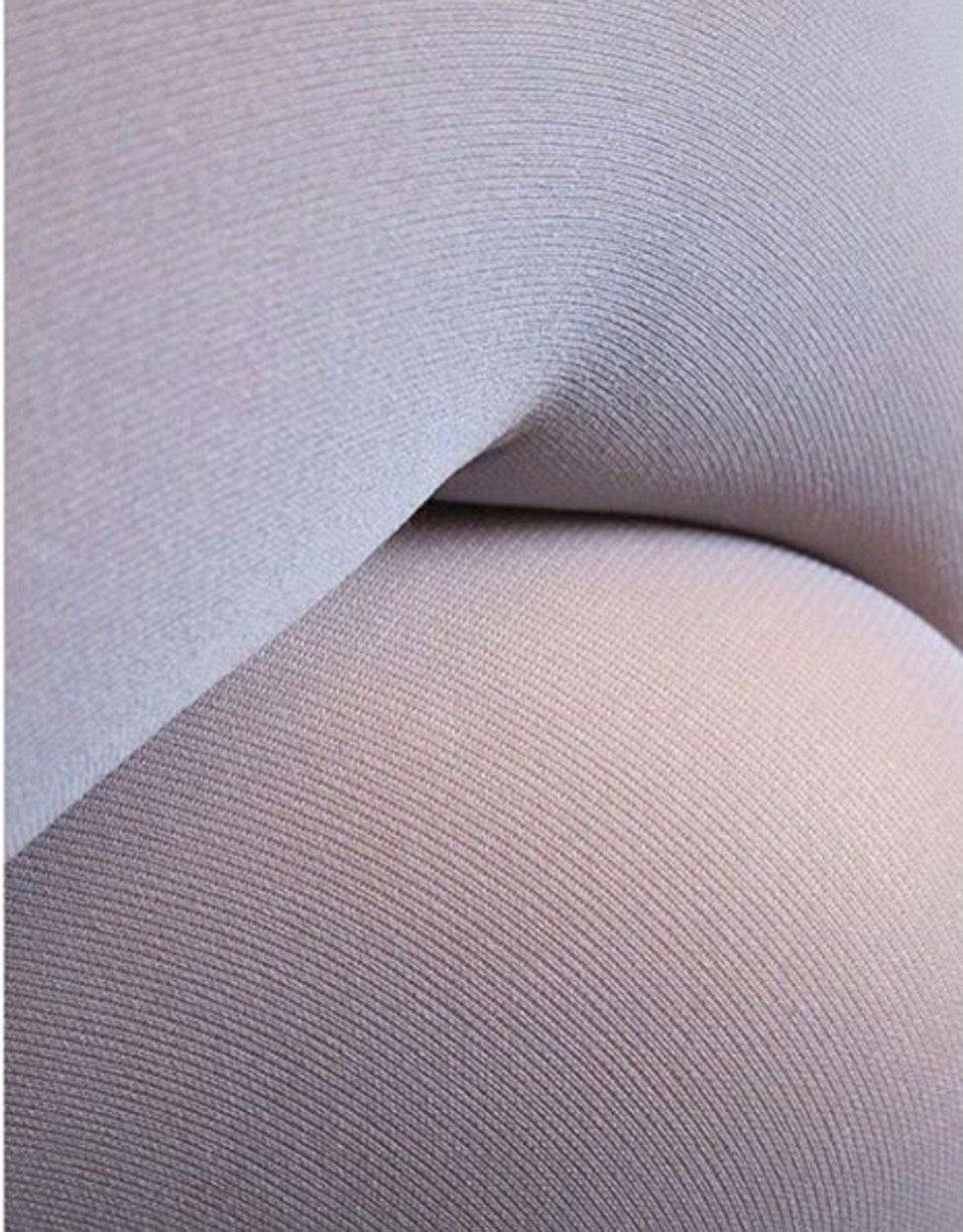 Maryanne Casasanta, Knees, 2011, digital photograph, edition of 5, 16″ x 12.” Photo courtesy of Birch Contemporary
Maryanne Casasanta, Knees, 2011, digital photograph, edition of 5, 16″ x 12.” Photo courtesy of Birch Contemporary
Much of the show’s cohesion stems from the strand of sensuality woven throughout its individual works. This sensuality is often achieved through a subtle appeal to our tactility and imagination rather than through a direct appeal to vision. In Sexish, texture dominates and the body —erotic or otherwise — is often implied only through its absence. Julie Moon’s ceramic billows of icing-like flesh, Dara Vandor’s obsidian black satin, Ilona Szalay’s smeary waxen scenes — these works crave touch. Meanwhile, the show’s consistent nod to textiles and fashion — in Orly Cogan’s found vintage linens or Cathy Daley’s dresses, for instance — concedes the sensuality and suppleness of fibre-based materials while also referencing the idea of women’s work and the feminine sphere.
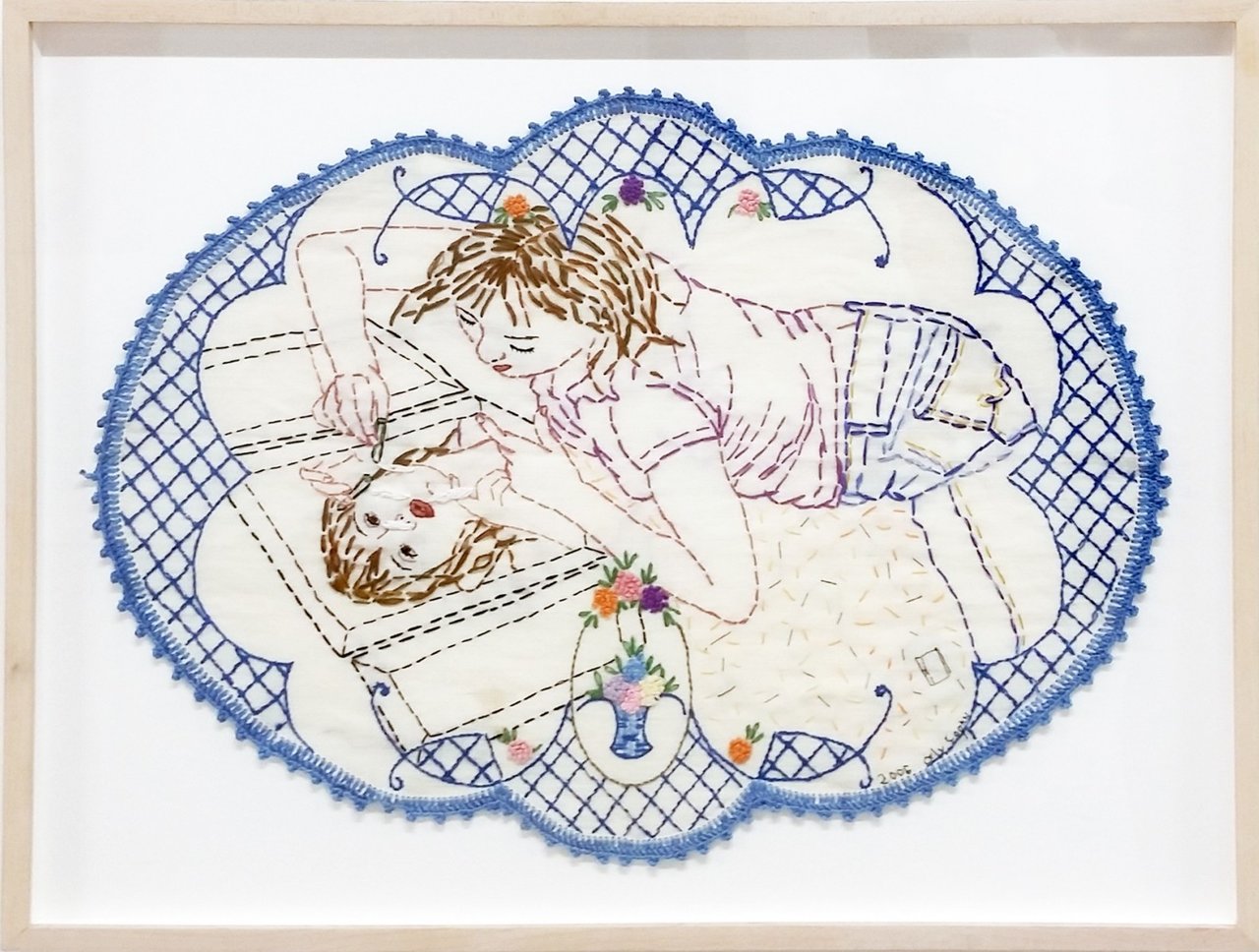 Orly Cogan, Mirror Mirror, 2006, hand stitched embroidery, paint and crochet on vintage linen, 19″ × 24.” Photo courtesy of Birch Contemporary
Orly Cogan, Mirror Mirror, 2006, hand stitched embroidery, paint and crochet on vintage linen, 19″ × 24.” Photo courtesy of Birch Contemporary
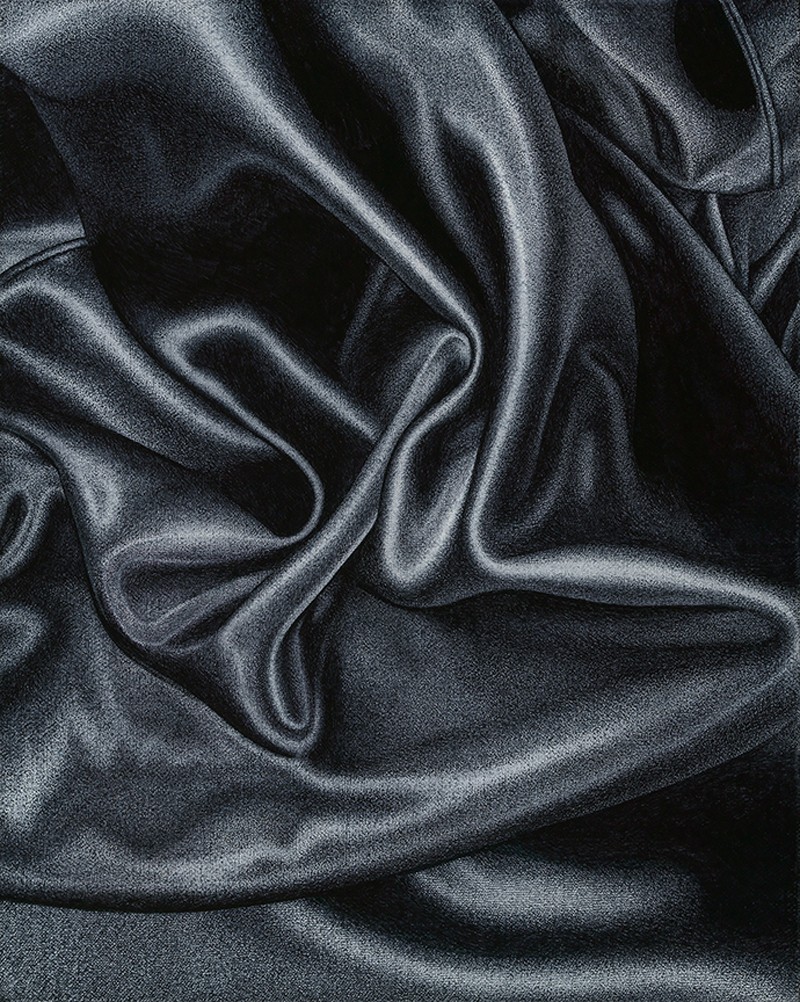 Dara Vandor, Black Silk II, 2015, ink on canvas, 10″ x 18.” Photo courtesy of Birch Contemporary
Dara Vandor, Black Silk II, 2015, ink on canvas, 10″ x 18.” Photo courtesy of Birch Contemporary
Indeed, this particular link between fashion, sexuality and female identity is well explored in Sexish. Daley’s drawings are perhaps the prime example. Working within the narrow conceptual confines of the little black dress, Daley reveals the range of expressivity, identity, and femininity that may be brought to a single article of clothing. Similarly, the bloomers, ballet shoe, and ponytail that Julie Moon incorporates into her ceramic works add specificity, feminity, humour, and even pathos to otherwise amorphous forms. Works such as these reveal the degree to which we fill in information when given even the slightest sartorial cue. Yet, they also add complexity to our notions of fashion and the erotic, proving that fashion is as much a space of fantasy, play and pleasure as it is one of oppression and identity politics.
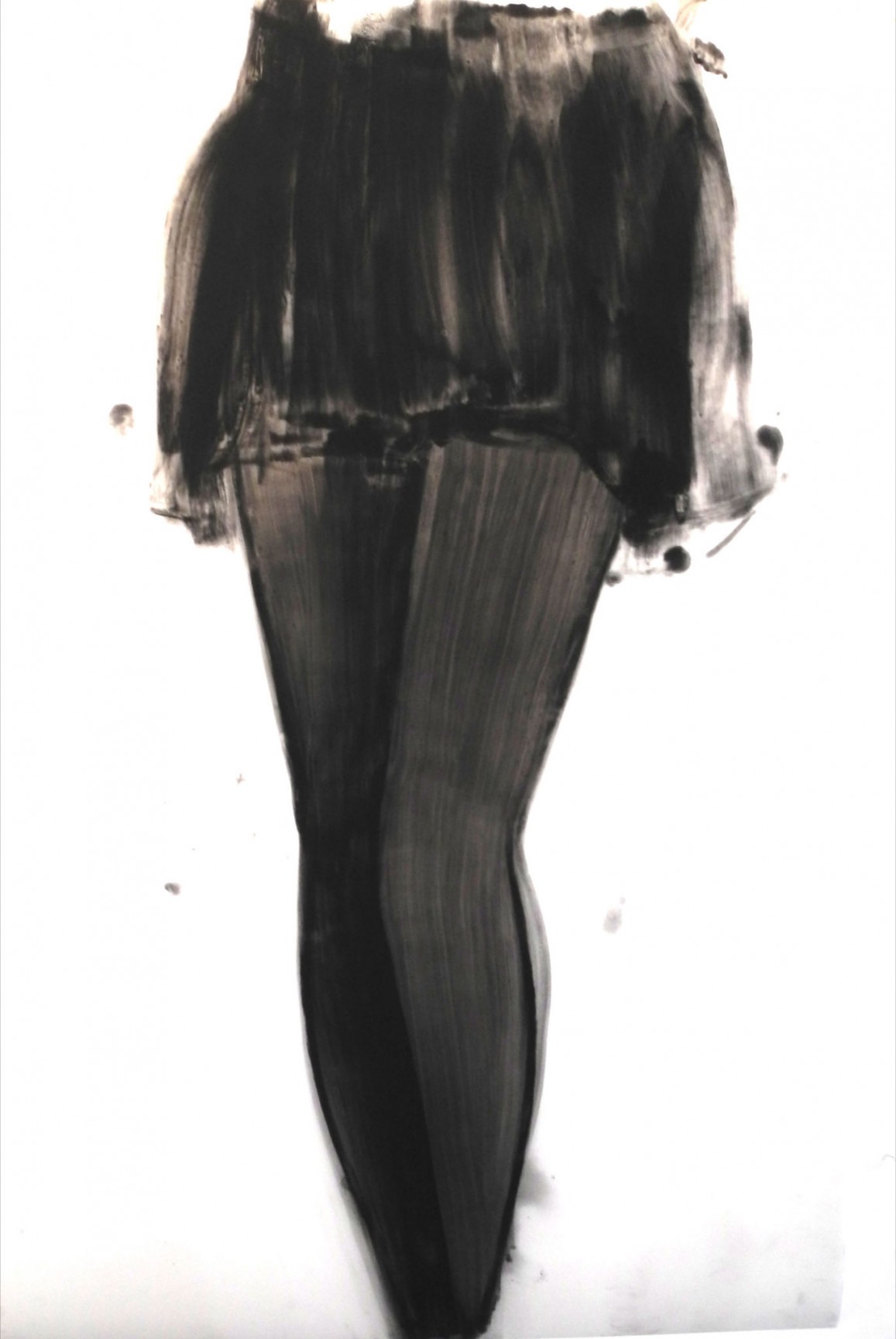 Cathy Daley, Untitled, 2009, pastel on vellum, 42″ × 24.” Photo courtesy of Birch Contemporary
Cathy Daley, Untitled, 2009, pastel on vellum, 42″ × 24.” Photo courtesy of Birch Contemporary
The show’s subtle and insightful exploration of fashion is largely what allows it to enter the realm of the sexual and sensual without being overly graphic. Indeed, within Sexish, clothing is often a stand-in for an absent body. This is certainly the case with Dara Vandor’s decontextualized lingerie. Yet, this titillating absence is also achieved in other ways. In her Tender and Perverse series, for instance, Maryanne Casasanta utilizes the negative space between two legs to create images that initially appear as simple abstract forms. Such works appeal to the power of our erotic imagination, conjuring the body through implication rather than through graphic portrayal. This is indeed a far cry from the in-your-face sexuality Birch and Travis were attempting to counter.
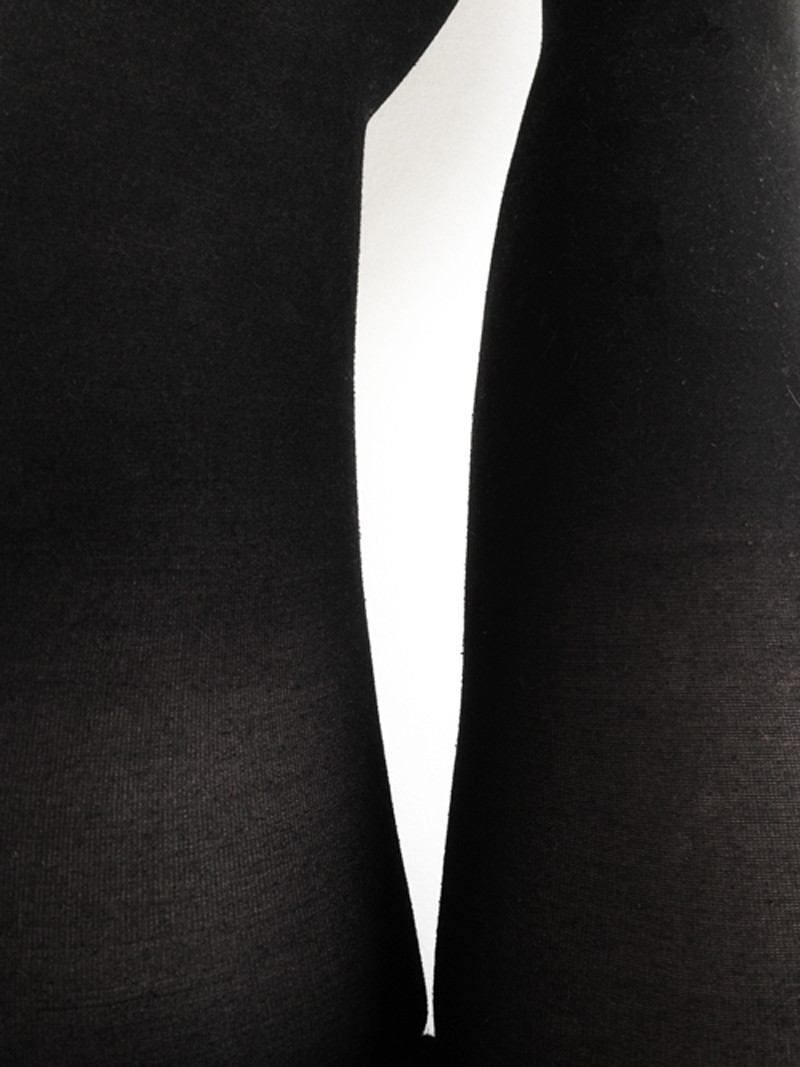 Maryanne Casasanta, Tender and Perverse 3, 2015, digital photograph, edition of 3, 11″ × 8 ½.” Photo courtesy of Birch Contemporary
Maryanne Casasanta, Tender and Perverse 3, 2015, digital photograph, edition of 3, 11″ × 8 ½.” Photo courtesy of Birch Contemporary
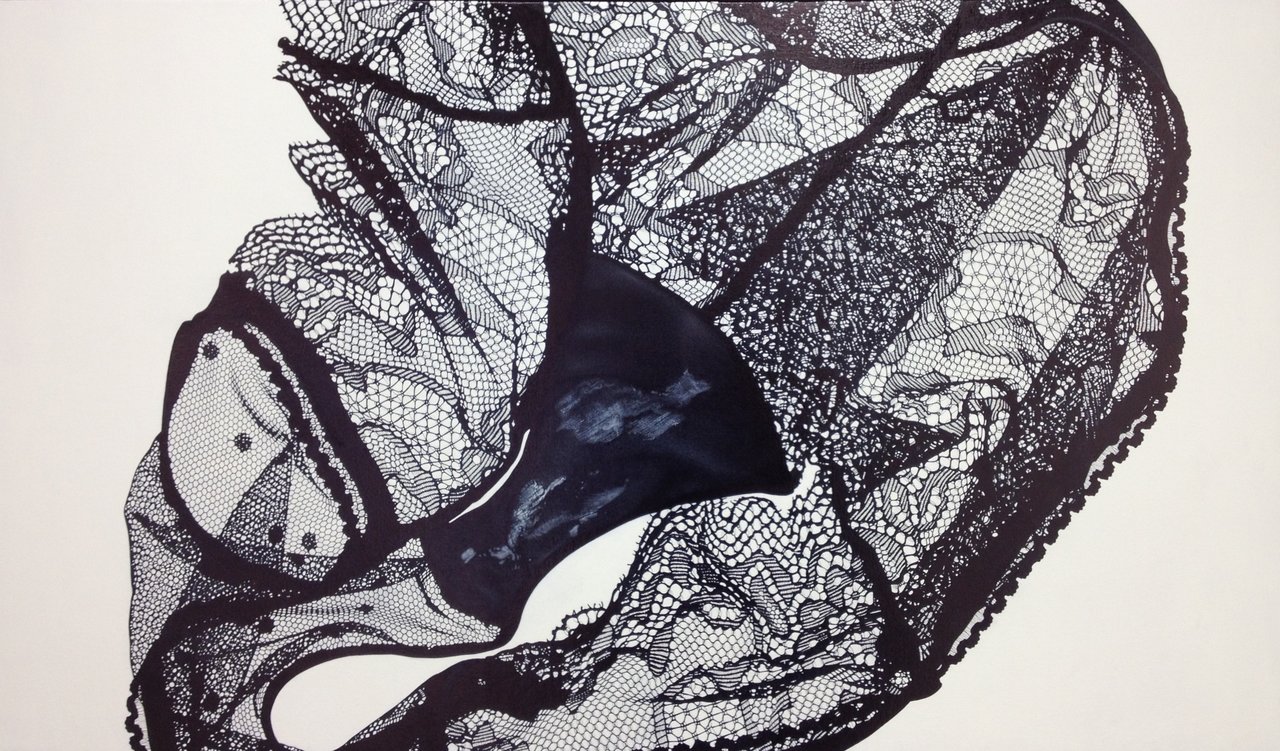 Dara Vandor, Her Dirty Underwear, 2015, ink on canvas, 24″ × 48.”
Dara Vandor, Her Dirty Underwear, 2015, ink on canvas, 24″ × 48.”
Yet, even in works where images of women or the body are present, they showcase individuality and disarming directness, rather than idealization, passivity, or stereotypes. Orly Cogan’s brilliant needlepoint self-portraits provide perhaps the best instance of this. Sewn onto vintage and found tablecloths, napkins, and other linens, her figures reference the airbrushed pin-ups of the 1950s and 60s. Yet, in spite of this reference, Cogan’s women unapologetically perform not-so-idealized tasks alongside stereotypical ones: they talk on the phone, comb their hair, and vacuum nude, but also check for cellulite and snort cocaine. Her works bring gritty realism, derision, even aggression to a typically passive genre of imagery and to the realm of the domestic and the girlish. In similar defiance of passivity, Janet Werner’s female figure in “Abby and Snow” and Ilona Szalay’s menacing femme fatales confront the viewer head on. In each of these images, women very much control a scene rife with conjecture and ambiguity.
 Orly Cogan, Pinch an Inch, 2005, framed, hand-stitched embroidery, crochet and paint on vintage linen, 42″ x 22.”
Orly Cogan, Pinch an Inch, 2005, framed, hand-stitched embroidery, crochet and paint on vintage linen, 42″ x 22.”
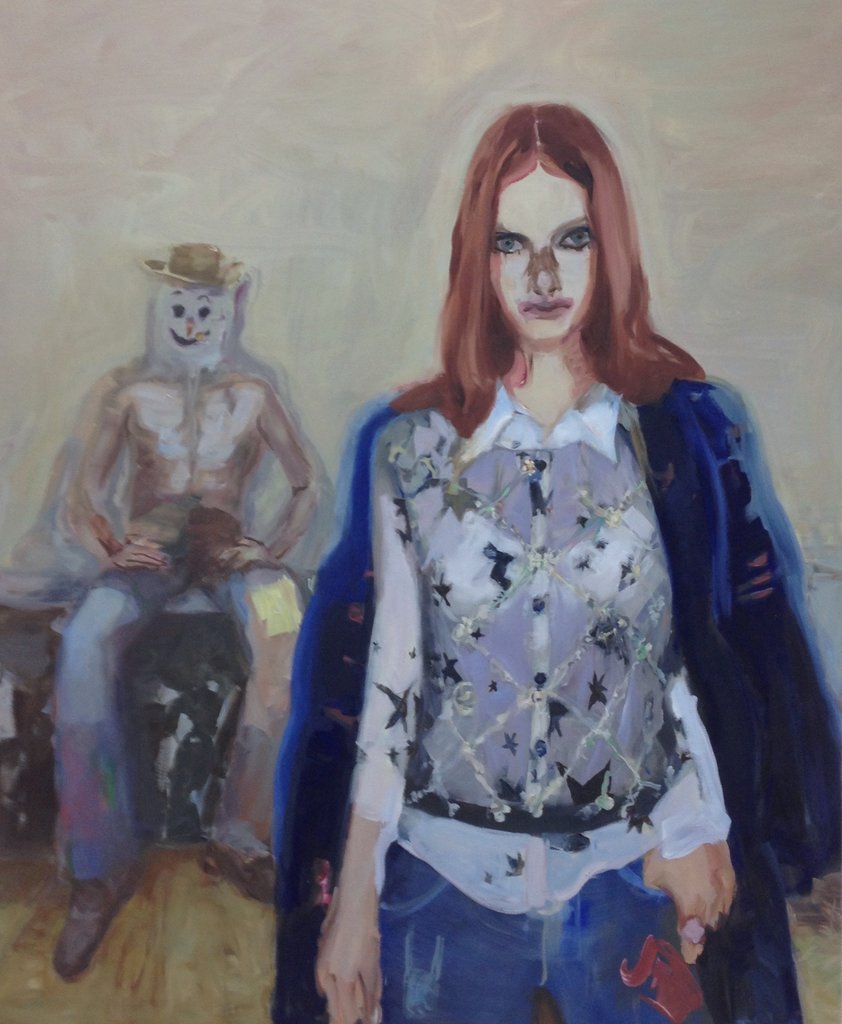 Janet Werner, Abby and Snow, 2014, oil on canvas, 67″ x 55.”
Janet Werner, Abby and Snow, 2014, oil on canvas, 67″ x 55.”
 Ilona Szalay, Girl and Graffiti, 2015, oil and resin on canvas, 31 ½” × 23 ½” (left), and Ilona Szalay, Girl and Painting, 2015, oil and resin on canvas, 31 ½” × 31 ½” (right)
Ilona Szalay, Girl and Graffiti, 2015, oil and resin on canvas, 31 ½” × 23 ½” (left), and Ilona Szalay, Girl and Painting, 2015, oil and resin on canvas, 31 ½” × 31 ½” (right)
It is this ambiguity that Sexish ultimately turns on. It successfully complicates accepted stereotypes of femininity and sexuality, playing with them while also defying them. Whether it’s through Dara Vandor’s boldly smeared black lace underwear, or Julie Moon’s far-from-thin ceramic bodies, the show combines sex, realism and individuality in a way that is appropriately complex. If one criticism can be leveled against the show — and perhaps it is a significant one — it is that the exhibition might have represented an even broader range of female experience, one that includes more non-white artists as well as a lesbian and trans perspective. The work in the show is fantastic. It simply would have been great to see more. Birch himself is not unaware of and even raised these criticisms, also expressing concern that his own status as a heterosexual white male co-curator might undermine the show’s message. Whether this is true remains up for debate. In the meantime, Sexish is a thought-provoking and nuanced exhibition, one that stands as a welcome interjection into a conversation that is as necessary today as it was 50 years ago. I suggest you join in.
Catherine MacArthur Falls
*Exhibition information: December 10, 2015 – January 23, 2016, Birch Contemporary, 129 Tecumseth Street, Toronto. Gallery hours: Wed – Fri, 10 am – 6 pm; Sat 11 – 5 pm.
